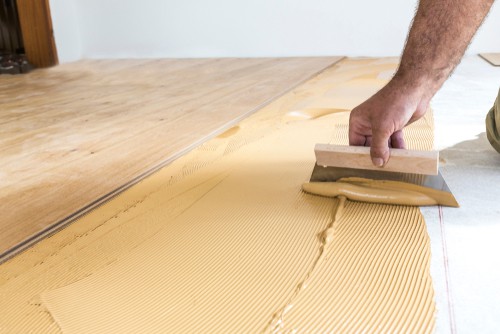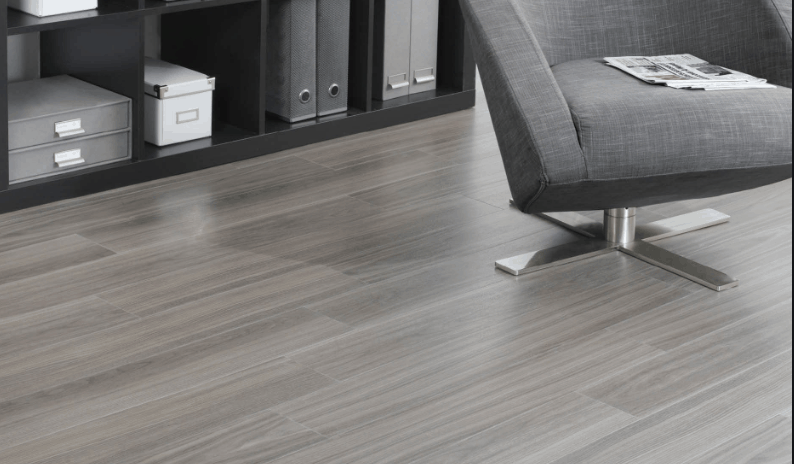Have you just purchased beautiful laminate flooring, envisioning its sleek surface and warm tones gracing your home? You’re excited to get it installed, but a nagging question arises: do you really need to wait overnight for the flooring to settle? The allure of seeing your floors finished sooner is tempting, but rushing the process can lead to unexpected problems.

Image: www.laminate-flooring.com.sg
This article delves into the often-confusing world of laminate flooring installation, debunking common myths and offering practical advice. We’ll explore why a waiting period is often recommended, examine the factors that influence the necessary time, and provide clear guidelines for achieving a flawless finish.
Understanding the Importance of Settling Time
Laminate flooring, while remarkably durable, requires a period of settling after installation. This is particularly crucial in rooms with fluctuating temperatures or humidity. When exposed to new conditions, materials can expand or contract, causing gaps, unevenness, or even buckling – the bane of any flooring project.
Factors Influencing Settling Time
The length of time your laminate needs to settle depends on a few key factors:
- Climate and Humidity: Flooring materials are more sensitive to temperature and humidity changes. In dry climates, the floor may shrink, while in humid environments, it may expand. This can be exacerbated if your home’s climate is uneven.
- Room Temperature: The ideal temperature for laying laminate flooring is between 65°F and 75°F. Extreme temperatures can impact the floor’s expansion and contraction.
- Type of Underlayment: Underlayment provides a barrier against moisture and cushions the floor. Different materials have varying thicknesses and require different settling times.
- Floor Size: The larger the room, the greater the potential for movement, as the flooring has more area to expand and contract.
- Subfloor Condition: An uneven subfloor can create movement in the laminate flooring, prolonging the settling time.
The Myth of the 24-Hour Rule
You’ve likely heard the rule of thumb: leave laminate flooring to settle for 24 hours. While this is a common guideline, it’s not always necessary, and sometimes, even detrimental.
The truth is, many laminate flooring manufacturers recommend a much shorter settling time – often just a few hours. This is because the flooring industry has advanced significantly, and modern laminate flooring is formulated to be more stable and less prone to expansion and contraction.

Image: www.greenfox.co.uk
Navigating the Waiting Game: What You Need to Know
Here’s a breakdown of the most important considerations:
When a Longer Settle Time is Crucial
- New Construction: Homes undergoing construction often experience drastic temperature and humidity fluctuations, making a longer settling time crucial for the flooring to adapt.
- Extreme Temperatures: Installers recommend waiting in extremely hot or cold environments, as the material is more susceptible to warping or cracking.
- Specific Floor Type: Some types of laminate flooring, like those with a high moisture content or are particularly sensitive to temperature fluctuations, may benefit from a longer settling time.
- High-Traffic Areas: Rooms that experience a lot of foot traffic (like hallways and kitchens) may need a slightly longer settling period.
When a Short Wait is Safe:
- Stable Environment: If your home has a consistent climate, you can often install the flooring and start using the space within a few hours.
- Experienced Installer: Experienced installers are familiar with the settling process and can assess the condition of the floor to determine the optimal waiting time.
- Manufacturer Instructions: Always consult the manufacturer’s instructions for your specific flooring. They will provide the most accurate information about settling time.
How to Minimize Settling Time
Here are some simple steps to minimize the time it takes for your new laminate floor to settle:
- Control the Climate: Prepare your home for the installation. Aim for a consistent temperature of 65°F to 75°F and adjust humidity levels to your region’s recommendations. You can consider using a dehumidifier or humidifier to fine-tune the environment.
- Ensure Proper Underlayment: Choose a high-quality underlayment that suits your flooring type and the characteristics of your subfloor.
- Follow Installation Instructions: Follow the specific installation guidelines for your laminate flooring. This includes proper acclimation of the planks before installation and proper spacing between planks.
- Leave the Room Unheated: Don’t rush to install your heating system immediately after installation. Let the floor settle at room temperature, and avoid sudden drastic temperature changes.
- Avoid Heavy Furniture Placement: Resist the temptation to place heavy furniture on the freshly installed floor for the first few hours.
Do You Have To Leave Laminate Flooring Overnight
The Bottom Line: Trust Your Intuition
The key is not to follow a strict rule but to use your judgment. If you’re unsure about the settling time, ask your installer for their expert advice. They can evaluate the specific conditions of your project and provide personalized guidance.
Trust your intuition. If you feel uneasy about rushing the process, it’s always better to err on the side of caution. A little patience will pay off in the long run, ensuring a seamless, long-lasting flooring installation that you can enjoy for years to come.






